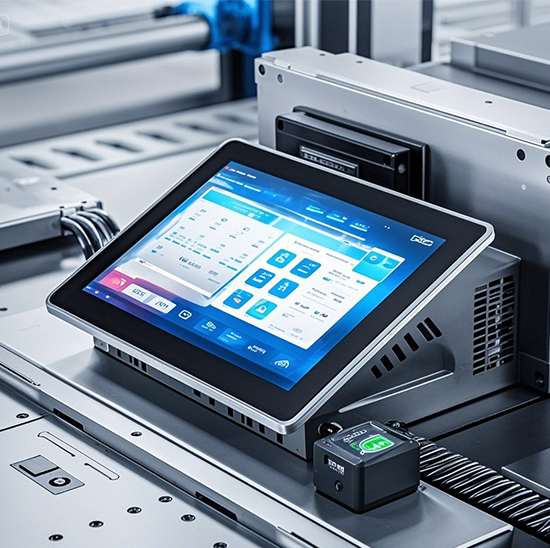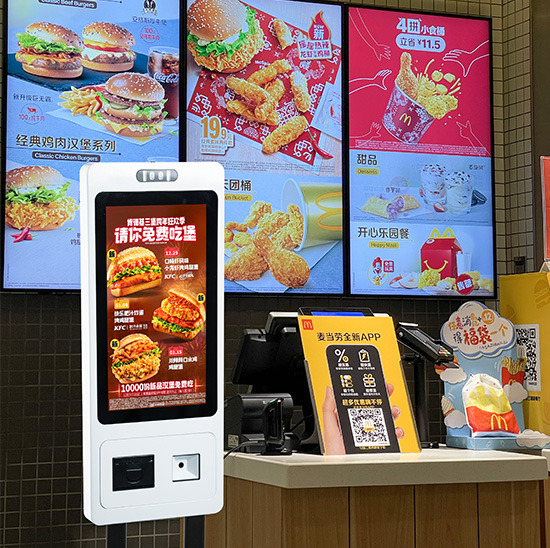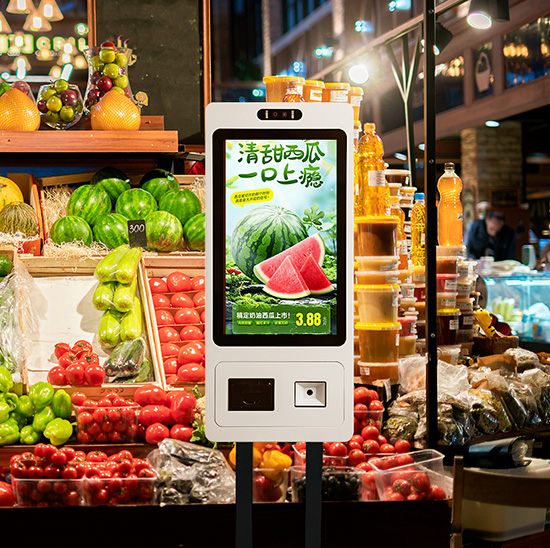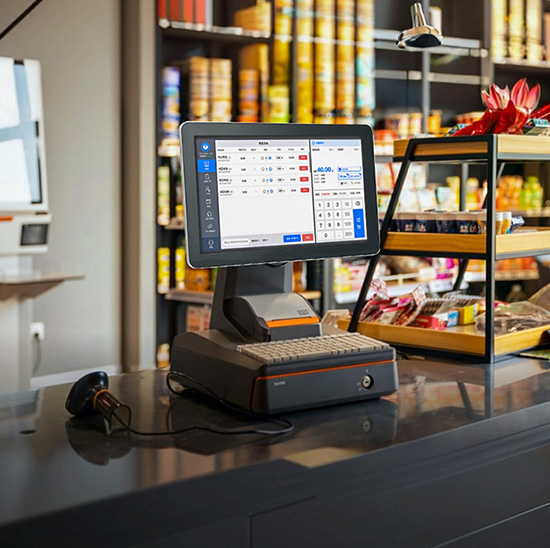MRI uređaji su okosnica dijagnostičke radiologije, isporučujući detaljne slike mekog tkiva koje usmjeravaju tretmane koji spašavaju život. U središtu ovih složenih sustava je MRI Machine Touch Screen—sučelje koje tehničarima omogućuje prilagodbu parametara skeniranja, pratiti sigurnost pacijenata, i optimizirajte kvalitetu slike. Za razliku od standardnih industrijskih zaslona osjetljivih na dodir, oni za MRI strojeve moraju ispunjavati stroge standarde "sigurne za MRI" kako bi se izbjeglo ometanje snažnog magnetskog polja stroja. Također im je potrebna neusporediva preciznost za rukovanje nijansiranim kontrolama potrebnim za visokokvalitetnu sliku. Ovaj članak istražuje ključnu ulogu sustava dodirnog zaslona uređaja MRI, njihove specijalizirane značajke, koristi za radiološke timove, i ključna razmatranja za implementaciju—pomoć klinikama i bolnicama da unaprijede svoje MRI operacije.

Zašto MRI uređaji zahtijevaju specijalizirane zaslone osjetljive na dodir
1、Dizajn siguran za MRI: Izbjegavanje magnetskih smetnji
Uređaji za magnetsku rezonancu stvaraju iznimno jaka magnetska polja (do 3.0 Tesla) koji mogu privući željezo (koji sadrže željezo) materijali—predstavljaju katastrofalne rizike ako su nekompatibilni uređaji u blizini. Zaslon osjetljiv na dodir kvalificiranog MRI stroja izrađen je od nemagnetskih materijala (npr., titanijum, plastični kompoziti, i elektronika bez bakra) za uklanjanje magnetske privlačnosti. Također prolazi rigorozna testiranja kako bi se osiguralo da ne emitira elektromagnetske smetnje (EMI) koji bi mogli iskriviti skenirane slike ili poremetiti funkcionalnost stroja. Standardni ekrani osjetljivi na dodir, nasuprot tome, sadrže željezne komponente (poput čeličnih okvira ili magnetskih senzora) koji bi se uvukao u otvor MRI, ugrožavanje pacijenata i oštećivanje opreme.
2、Preciznost za nijansirane kontrole slike
MRI skeniranje zahtijeva sitne prilagodbe parametara poput vidnog polja (FOV), debljina kriške, i slijed impulsa—čak i promjena od 0,1 mm u debljini kriške može utjecati na jasnoću slike. Sustavi dodirnog zaslona uređaja za magnetsku rezonanciju imaju senzore visoke rezolucije na dodir (≤1mm točnost dodira) i responzivna sučelja koja tehničarima omogućuju ta precizna podešavanja dodirom ili prevlačenjem. Ova razina kontrole je nemoguća s nezgrapnim kontrolama temeljenim na gumbima, koji često zahtijevaju listanje kroz izbornike kako bi se napravile male promjene—gubljenje vremena i povećanje rizika od pogrešaka.
Ključne karakteristike visokoučinkovitih zaslona osjetljivih na dodir uređaja za MRI
1、MRI-sigurna konstrukcija & Izdržljivost
Osim nemagnetskih materijala, vrhunski zasloni uključuju zapečaćena kućišta (Ocijenjeno IP65) za zaštitu unutarnjih komponenti od prašine i prolijevanja u radiološkim laboratorijima. Oni također koriste otporan na ogrebotine, staklo otporno na kemikalije koje podnosi često čišćenje dezinficijensima kompatibilnim s MRI (npr., maramice koje nisu na bazi alkohola—alkohol može oštetiti neke nemagnetske premaze). Mnogi modeli također su dizajnirani da izdrže vibracije i temperaturne fluktuacije uobičajene u MRI paketima.
2、Zasloni visoke vidljivosti za slabo osvijetljena okruženja
MRI skeniranje često se izvodi u slabo osvijetljenim prostorijama kako bi pacijenti bili mirni i kako bi se izbjeglo ometanje senzora uređaja. MRI Machine Touch Screen sustavi rješavaju to s visokom svjetlinom (800+ griva) zaslone i premaze protiv odsjaja koji osiguravaju čitljivost čak i pri slabom osvjetljenju. Također imaju sučelja označena bojama—npr., zelena za „skeniranje u tijeku,” crveno za “sigurnosno upozorenje”—što tehničarima omogućuje praćenje stanja na prvi pogled bez naprezanja očiju.
3、Besprijekorna integracija s MRI tijekovima rada
Najbolji zaslon osjetljiv na dodir uređaja za MRI integrira se s izvornim softverom uređaja za magnetsku rezonancu (npr., Siemens syngo, Radna stanica GE Advantage) i radiološki informacijski sustavi (RIS). To omogućuje tehničarima da: povući podatke o pacijentu izravno iz RIS-a, spremite parametre skeniranja za ponovne preglede (npr., naknadne snimke koljena), i slanje slika u PACS (Sustavi za arhiviranje slika i komunikaciju) jednim dodirom. Neki napredni modeli također podržavaju daljinski nadzor, dopuštajući starijim radiolozima da pomognu u složenim skeniranjima izvan mjesta.
4、Kontrole na prvom mjestu sigurnosti
Sigurnost pacijenata je najvažnija u MRI, a zasloni osjetljivi na dodir uključuju posebne sigurnosne značajke: veliki, lako dostupni gumbi "Zaustavi skeniranje" koji nadjačavaju sve druge naredbe, upozorenja u stvarnom vremenu za probleme kao što su kretanje pacijenta ili anomalije magnetskog polja, i funkcije zaključavanja za sprječavanje neovlaštenih podešavanja. Ove značajke osiguravaju da tehničari mogu brzo reagirati u hitnim slučajevima, a istovremeno održavaju usklađenost sa sigurnosnim standardima (npr., ACR MRI sigurnosne smjernice).
Prednosti nadogradnje na specijalizirani MRI uređaj s dodirnim zaslonom
1、Brže, Učinkovitije skeniranje
Intuitivne dodirne kontrole skraćuju vrijeme postavljanja skeniranja za 15–20% u usporedbi sa sustavima temeljenim na gumbima. Tehničari mogu brzo odabrati sekvence impulsa, podesite vidno polje, i potvrdite podatke o pacijentu—dopuštajući klinikama da uklope više pacijenata u svoj raspored bez žrtvovanja kvalitete slike. Za zaposlene radiološke odjele, to znači veću propusnost i povećanje prihoda.
2、Poboljšana kvaliteta slike & Dijagnostička točnost
Precizna podešavanja dodirom omogućuju tehničarima da optimiziraju parametre skeniranja za svakog pacijenta (npr., tanje kriške za pedijatrijske bolesnike, veća rezolucija za onkološka snimanja). To rezultira jasnijim slikama koje pomažu radiolozima da otkriju male abnormalnosti (poput ranog stadija tumora) koji bi mogli biti propušteni s neoptimalnim postavkama.
3、Poboljšani tehničar & Iskustvo pacijenata
Ergonomski zasloni osjetljivi na dodir smanjuju umor tehničara—nema više naginjanja radi pritiskanja malih tipki ili listanja kroz složene izbornike. Za pacijente, brže skeniranje znači manje vremena u provrtu MRI (smanjenje klaustrofobije) i manje ponavljanja skeniranja (smanjenje anksioznosti). Intuitivno sučelje također skraćuje vrijeme obuke novih tehničara, što je kritično za klinike s velikom fluktuacijom osoblja.
Često postavljana pitanja o dodirnim zaslonima aparata za MRI
P1: Može li se standardni zaslon osjetljiv na dodir modificirati za rad s MRI uređajima?
A1: Ne—modifikacija standardnog zaslona osjetljivog na dodir da bude siguran za MRI nije izvediva niti sigurna. Zahtijeva zamjenu svih željeznih komponenti i redizajn elektronike kako bi se izbjegao EMI, što je skuplje od kupnje namjenskog MRI stroja s dodirnim zaslonom.
Q2: Kako očistiti zaslon osjetljiv na dodir uređaja za magnetsku rezonancu, a da ga ne oštetim?
A2: Koristite samo MRI kompatibilne, bezalkoholna, neabrazivne dezinfekcijske maramice (provjerite popis proizvođača). Izbjegavajte jake kemikalije (poput izbjeljivača) koji mogu oštetiti nemagnetski premaz. Nježno obrišite kako biste spriječili grebanje stakla.
Q3: Jesu li ovi zasloni osjetljivi na dodir kompatibilni sa svim markama uređaja za magnetsku rezonancu (npr., Siemens, GE, Philips)?
A3: Većina vodećih modela uređaja za magnetsku rezonancu s dodirnim zaslonom kompatibilni su s glavnim markama. Naši zasloni unaprijed su konfigurirani za rad sa Siemensom, GE, Philips, i Toshiba MRI sustavi, i možemo prilagoditi kompatibilnost za manje uobičajene modele.
Q4: Koliki je tipični životni vijek MRI uređaja s dodirnim zaslonom?
A4: Uz pravilno održavanje, traju 7-10 godina. Nemagnetske komponente i zabrtvljeni dizajn otporni su na habanje, a većina proizvođača nudi jamstvo od 3 do 5 godina koje pokriva nedostatke u materijalu ili izradi.
Zaključak
Specijalizirani zaslon osjetljiv na dodir uređaja za MRI nije samo dodatak - to je kritična komponenta koja utječe na učinkovitost skeniranja, kvaliteta slike, i sigurnost pacijenata. Ulaganjem u MRI siguran, precizan, i dodirni zaslon jednostavan za korištenje, radiološki odjeli mogu pojednostaviti tijek rada, poboljšati dijagnostiku, i stvoriti bolje iskustvo za tehničare i pacijente.
Ako ste spremni nadograditi kontrolno sučelje svog MRI uređaja (ili vam je potrebna pomoć u provjeri kompatibilnosti s vašim određenim MRI modelom), Ispunite obrazac na našoj web stranici. Naši stručnjaci radiološke tehnologije procijenit će vaše potrebe, pružiti detaljnu demonstraciju proizvoda, i dostaviti prilagođenu ponudu—pomažući vam da podignete svoje MRI operacije na višu razinu.



